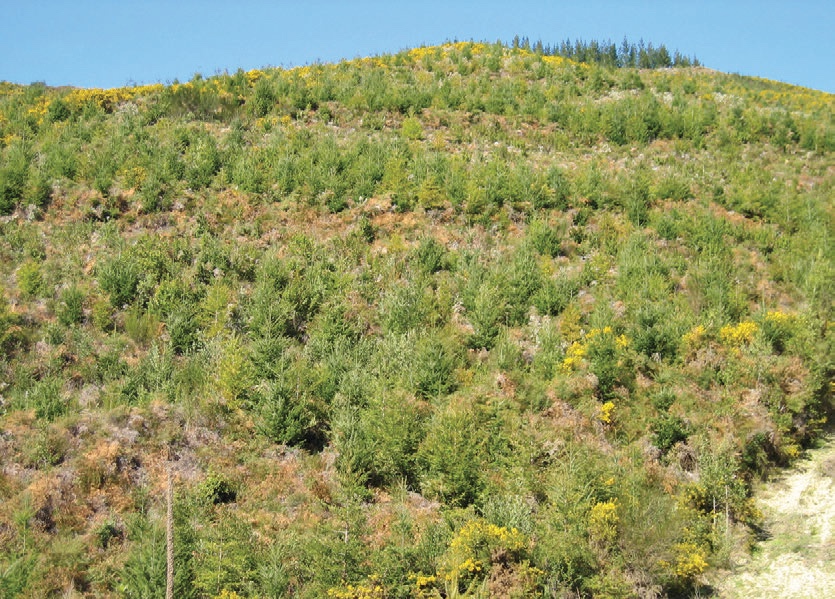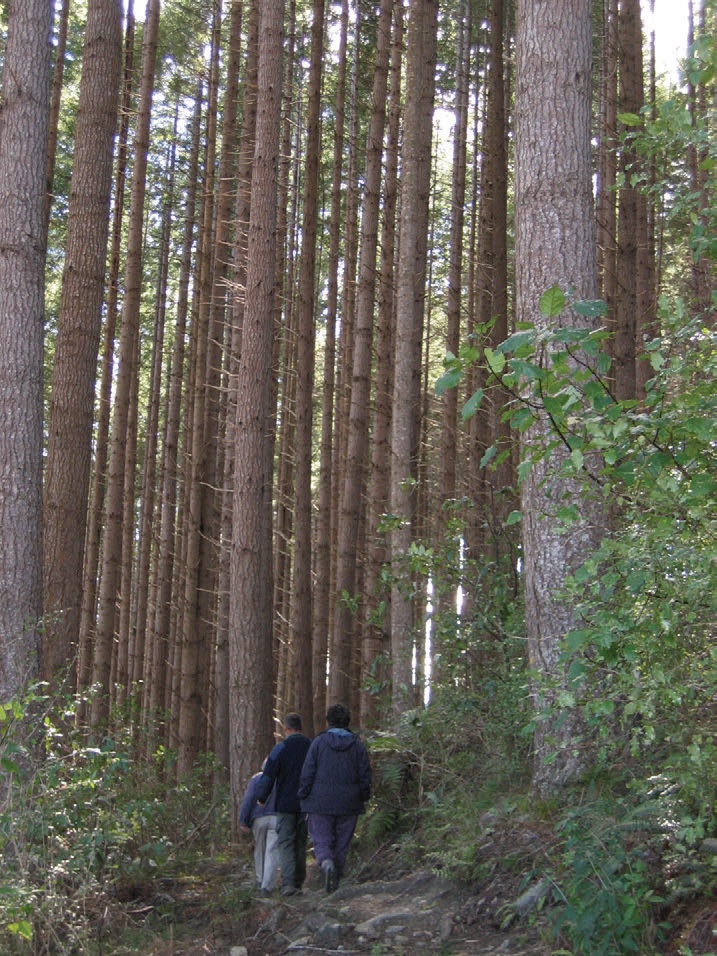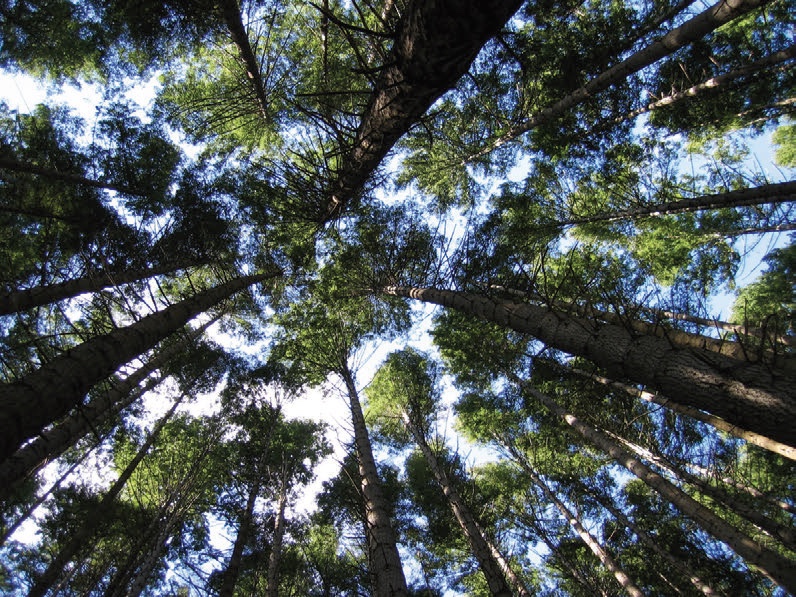Nelson farm forestry field day
Roger May, New Zealand Tree Grower February 2012.
On a beautiful spring morning about 15 members of Nelson farm forestry met at the Appleton family property at Motupiko, 45 minutes drive south of Nelson, to look at the early stages of second rotation plantation forestry. Eric and Robert Appleton run one of New Zealand’s best known tree nurseries and their commitment to trees and forestry is clearly evident in the forests they manage.
The property we visited is entirely forested and consists of 125 hectares of exotic plantation and about 55 hectares of native forest. The land is Moutere gravel hill country of fairly low fertility and the moderately steep slopes are long, up to 500 metres. The altitude ranges from 300 to 600 metres above sea level and average annual rainfall is about 1,250 mm. Radiata pine was initially planted in the mid-1980s, pruned and thinned. Except for the last hectares, all of this has now been harvested. But over the years it became apparent that planting radiata on these hills had some drawbacks and limitations.The stands suffered from shallow rooting, especially on north-facing slopes, and this combined with the severe wind and snow in 2005, resulted in significant wind throw.
All the toppling triggered the start of harvesting and so the Appletons needed to decide what to replant. The limitations of radiata on the site convinced the Appletons to try something different – a 50:50 mix of Douglas fir and redwood. The two species were planted at 800 stems per hectare, a total of 1,600 stems per hectare, and in a matrix with four of one species surrounding each one of the other. The redwoods are from five different seedlots from Mendocino and Sonoma in California and raised in their nursery. In addition, Robert has planted a further six hectares of more recent redwood clonal introductions from California.

Weed control
Robert explained the problems they initially had with controlling woody weeds and wildings after clearcutting, particularly after the prolonged harvesting operations. The first 38 hectares replanted were sprayed only once. This later resulted in having to cut out three-year-old wildings and the heaviest patches of broom at a cost of $12,000. This year’s 40 hectare planting area has been pre-sprayed twice, a year apart, with a mixture of glyphosate and metsulferon to reduce the competition from wilding pines and brush weeds.

The first of these mixed plantings were released by spot-spraying, but not fertilised. The next trees will be release sprayed, with any wildings hand-pulled in 12 months before they get too big. Both species will also be hand fertilised with a general fertiliser.
Five years on, the first areas replanted in Douglas fir and redwood look good, despite the weed problems. The best are about six metres high with an average around four metres. What will be interesting is how the Appletons develop the tending regime to optimise growth and form of the mixture, and in the longer term, how the mixture stands up to the damaging effects of the weather.
Douglas fir
After leaving Appleton’s, we then visited an 80-year-old stand of Douglas fir in Golden Downs forest, known as NN100. In 1949 at age 18 the stand was set up as a trial and is the second oldest trial in the Scion database. Originally planted at 1,600 stems per hectare, three of the four plots in the stand have been subjected to different thinning regimes over the years.


At June 2010, the untended control plot had thinned naturally down to 450 stems a hectare and has a total standing volume of 1,825 cubic metres a hectare. In contrast, the plot most drastically thinned currently holds 1,310 cubic metres a hectare. At over 55 metres mean top height, it is a very impressive and inspirational stand. It is a credit to the different forest owners over the years who have retained this stand and kept it in order. Long may it continue.

 Farm Forestry New Zealand
Farm Forestry New Zealand